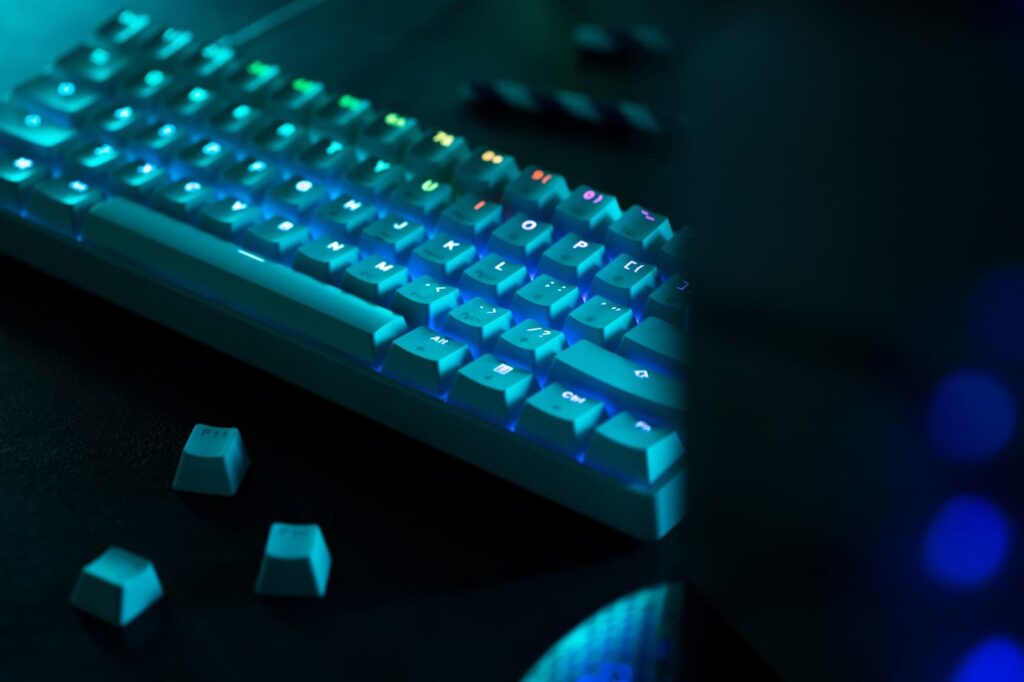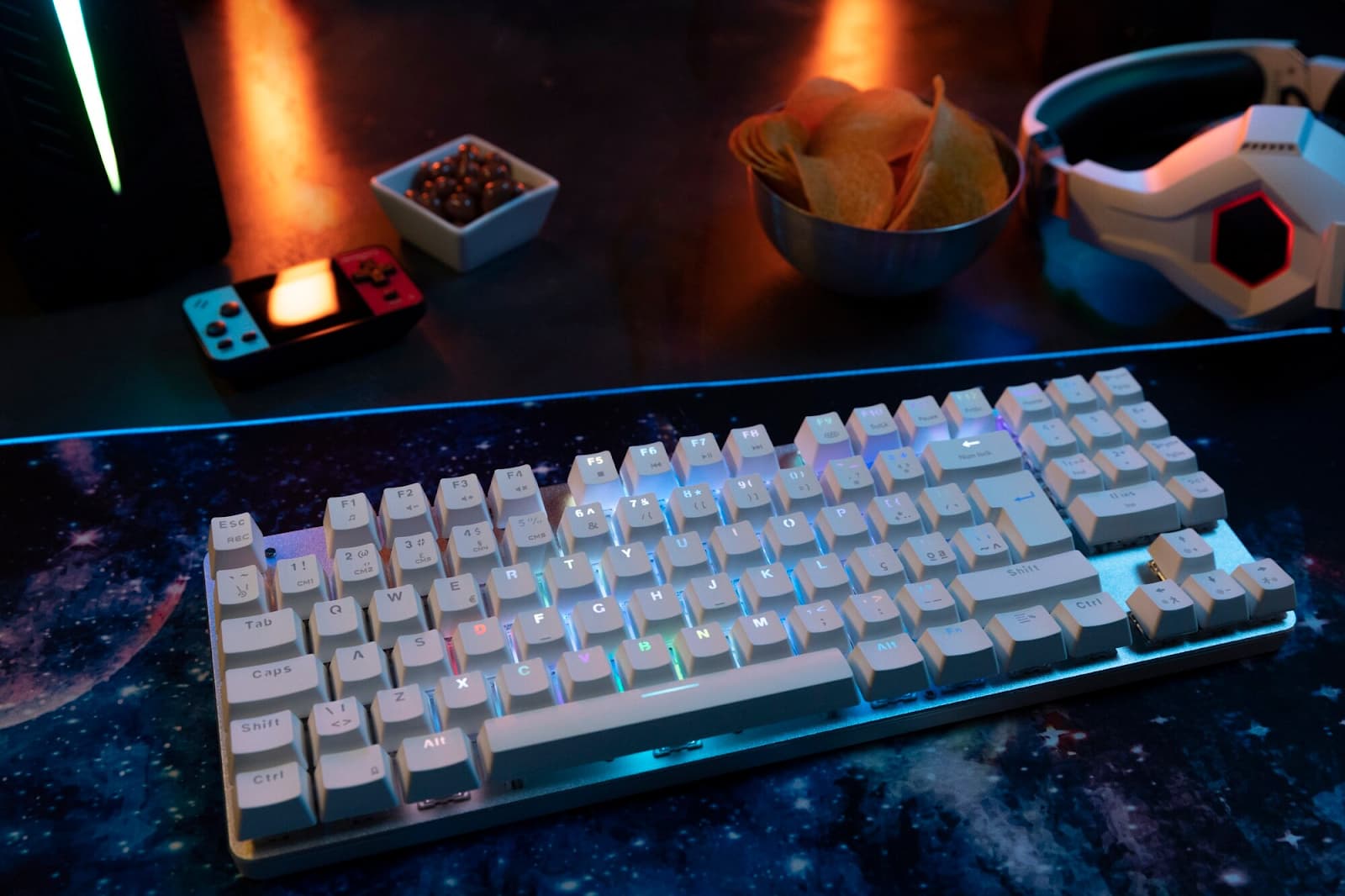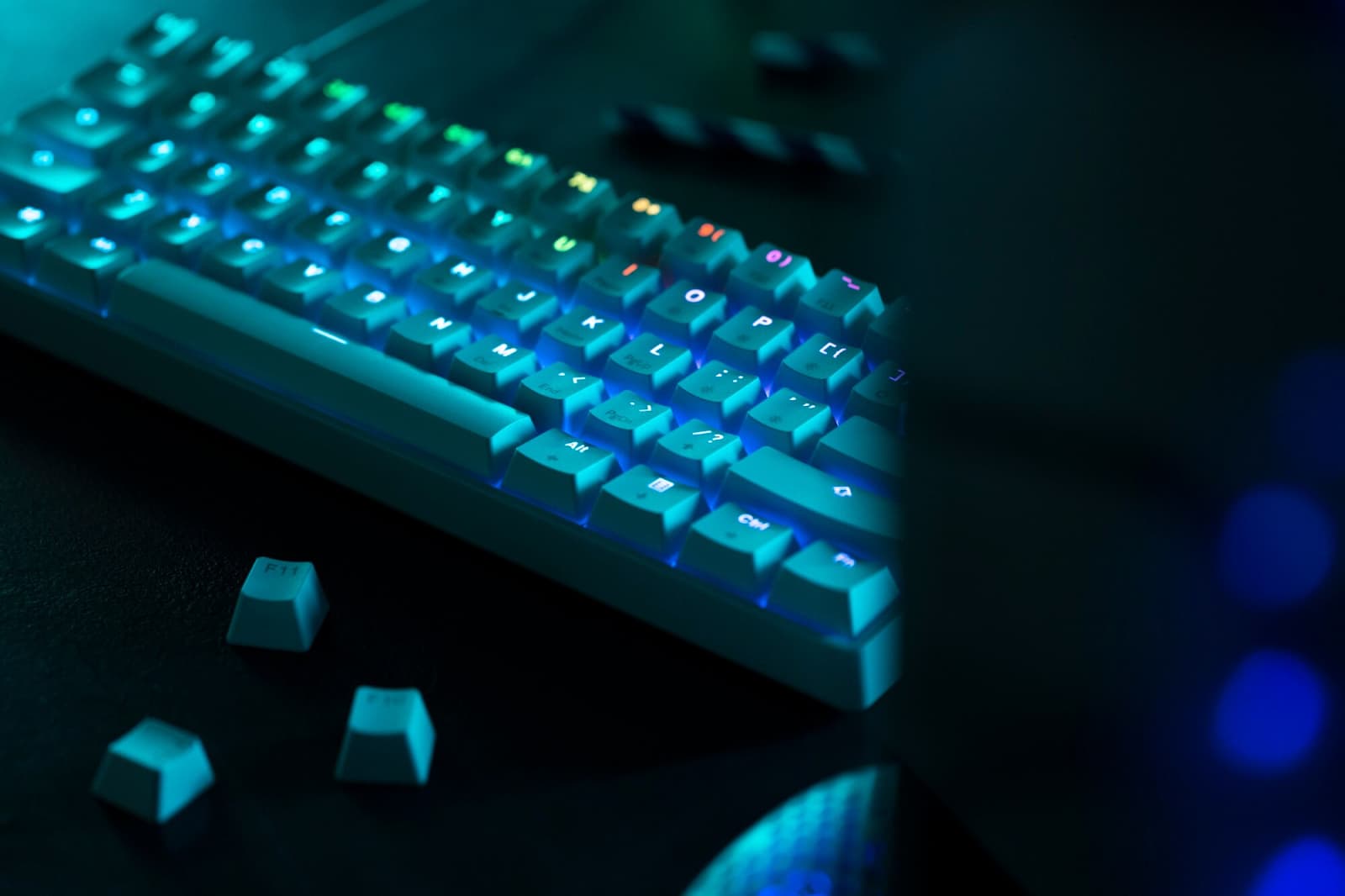In the world of gaming, every detail matters when it comes to gaining a competitive edge. One often overlooked aspect that can significantly impact a gamer’s performance is the keyboard layout. The way keys are arranged and the design of the keyboard can influence how quickly and accurately players can execute commands in-game. This article delves into the various keyboard layouts commonly used for gaming and explores their pros and cons, helping gamers make informed decisions to enhance their gaming experience.
QWERTY Layout
The QWERTY layout is the most widely used keyboard layout across the globe. Originally designed for typewriters, this layout has become the standard for computer keyboards. When it comes to gaming, the familiarity of the QWERTY layout can be an advantage for many players, as they are already accustomed to the key placements. However, some gamers find that the QWERTY layout may not be the most optimized for gaming purposes.
Pros of QWERTY Layout:
- Familiarity: Most users are already comfortable with the QWERTY layout due to its ubiquity;
- Accessibility: Easy to find replacement keycaps or custom keycap sets for customization.
Cons of QWERTY Layout:
- Suboptimal Key Placements: Some essential gaming keys may not be ideally located for quick access;
- Hand Fatigue: Prolonged gaming sessions can lead to hand fatigue due to the layout design.
| Key | Position |
|---|---|
| WASD | Commonly used for movement |
| Spacebar | Often used for jumping |
Dvorak Layout
The Dvorak layout is an alternative keyboard layout designed with the goal of increasing typing efficiency and reducing finger movement. While not as popular as the QWERTY layout, some gamers swear by the Dvorak layout for its ergonomic benefits and potential performance improvements in gaming scenarios.
Pros of Dvorak Layout:
- Ergonomic Design: Reduced finger movement can lead to less strain during long gaming sessions;
- Typing Efficiency: Faster typing speeds may translate to quicker in-game actions.
Cons of Dvorak Layout:
- Learning Curve: Switching to the Dvorak layout requires retraining muscle memory, which can be challenging;
- Compatibility Issues: Not all games support remapping keys to accommodate the Dvorak layout.
Key Placement Comparison:
- QWERTY: Standard layout with keys optimized for typing;
- Dvorak: Keys rearranged for improved efficiency and reduced finger movement.
Colemak Layout
Colemak is another alternative keyboard layout that aims to improve typing speed and comfort compared to the traditional QWERTY layout. While not specifically designed for gaming, some gamers have found benefits in using the Colemak layout for their gaming sessions.
Pros of Colemak Layout:
- Efficiency: Reduced finger travel distance can lead to faster key presses;
- Comfort: Ergonomically designed layout can reduce hand fatigue during extended gaming periods.
Cons of Colemak Layout:
- Limited Support: Similar to the Dvorak layout, not all games may support remapping keys for Colemak;
- Transition Difficulty: Switching from QWERTY to Colemak requires time and practice to adapt.
Typing Speed Comparison:
- QWERTY: Standard layout with familiar key positions;
- Colemak: Optimized layout for increased typing efficiency.
Mechanical Keyboards
Mechanical keyboards have gained popularity among gamers for their tactile feedback, durability, and customizable features. The type of switches used in a mechanical keyboard can significantly impact the gaming experience, offering different levels of actuation force, noise levels, and tactile feedback.
Pros of Mechanical Keyboards:
- Tactile Feedback: Distinct key presses provide sensory input for better control in games;
- Durability: Mechanical switches are known for their longevity compared to membrane keyboards.
Cons of Mechanical Keyboards:
- Cost: Mechanical keyboards are generally more expensive than membrane keyboards;
- Noise: Some mechanical switches can be loud, which may be distracting to others in shared spaces.
Switch Comparison:
- Cherry MX Red: Linear switch preferred for gaming due to smooth keystrokes;
- Cherry MX Blue: Tactile and clicky switch with audible feedback.

Custom Keybinds
Customizing keybindings is a common practice among gamers to optimize their gameplay experience. By assigning specific actions to different keys based on personal preferences and playstyle, players can streamline their movements and reactions in-game, potentially improving their overall performance.
Pros of Custom Keybinds:
- Personalization: Tailoring key assignments to individual preferences can enhance comfort and efficiency;
- Optimized Gameplay: Strategic key placements can lead to quicker response times and smoother gameplay.
Cons of Custom Keybinds:
- Learning Curve: Adjusting to new keybinds may require time and practice to become proficient;
- Compatibility Issues: Some games may have limitations on key remapping, restricting customization options.
Example Custom Keybinds:
- FPS Game: Assigning crouch to a side mouse button for quick access;
- MOBA: Mapping abilities to easily reachable keys for rapid casting.
Split Keyboards
Split keyboards are designed to promote a more ergonomic typing experience by allowing users to position the two keyboard halves at shoulder width apart. This configuration aims to reduce strain on the wrists and shoulders, potentially benefiting gamers who spend extended periods in front of their computers.
Pros of Split Keyboards:
- Ergonomic Benefits: Improved posture and reduced strain on wrists and shoulders;
- Customizable Layout: Users can adjust the positioning of keyboard halves for personalized comfort.
Cons of Split Keyboards:
- Adaptation Period: Getting used to the split layout may take time for muscle memory adjustment;
- Availability: Limited options compared to traditional keyboards, especially in gaming-specific designs.
Ergonomic Features:
- Adjustable Tenting: Allows users to tilt the keyboard halves for a more natural wrist position;
- Palm Rests: Provides support for wrists to reduce strain during extended use.
Conclusion
Choosing the right keyboard layout for gaming is a personal decision that can have a significant impact on your performance and comfort during gameplay. Whether you opt for the familiarity of the QWERTY layout, the ergonomic benefits of alternative layouts like Dvorak and Colemak, or the customization options of mechanical keyboards and custom keybinds, finding the perfect setup can enhance your gaming experience. Consider your playstyle, preferences, and ergonomic needs to select a keyboard layout that suits you best and helps you achieve your gaming goals.



